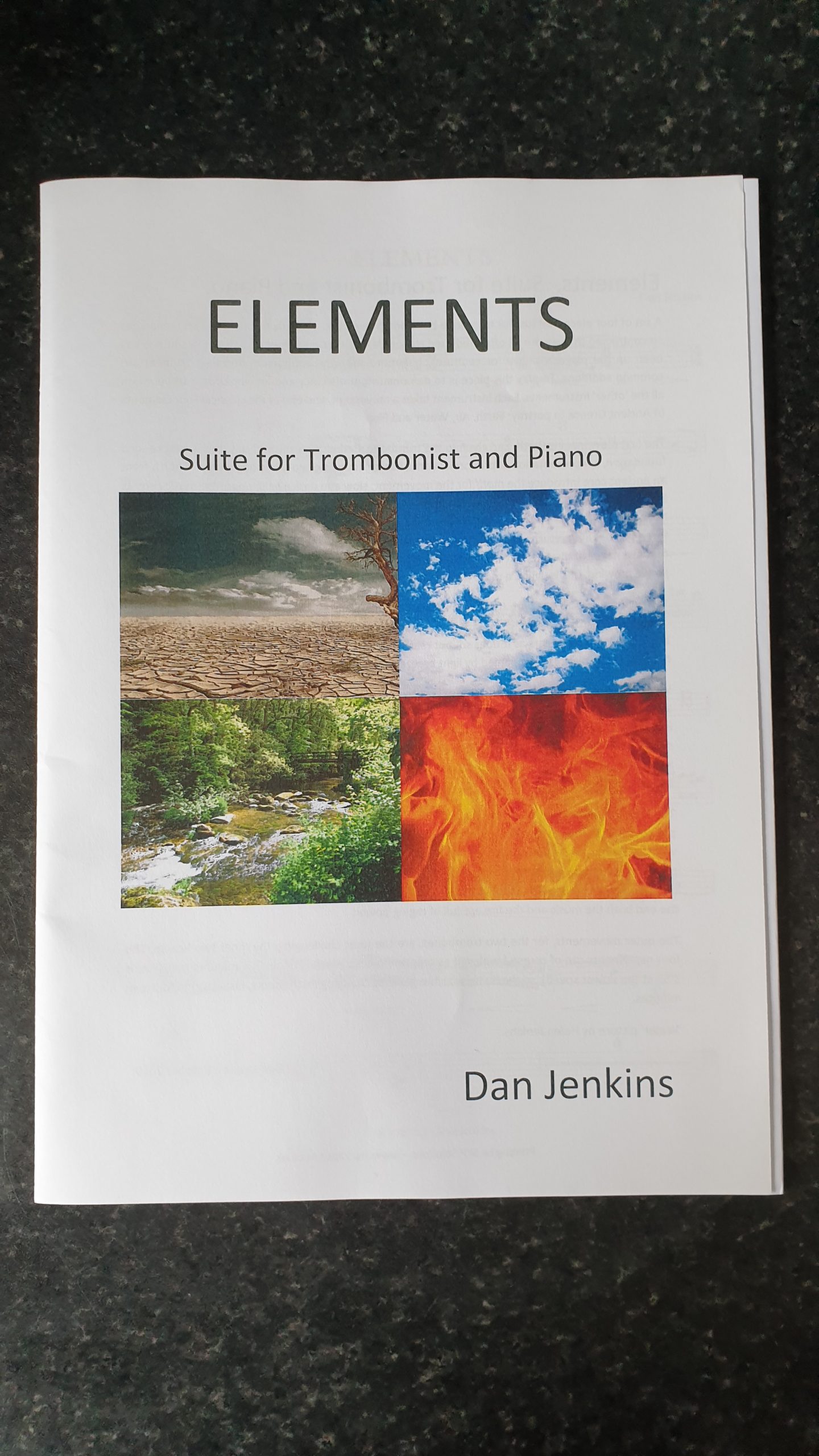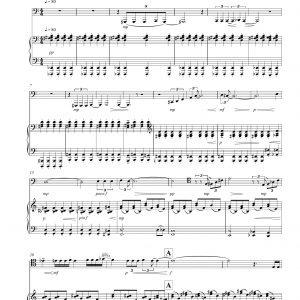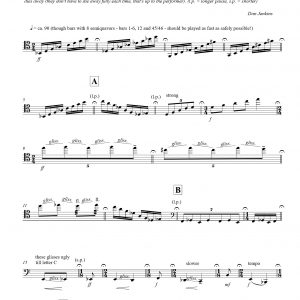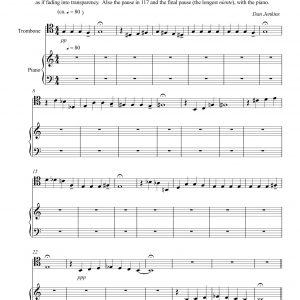Elements
£25.00 – £30.00
My other Big Idea.
A set of four pieces not just for trombone but trombone player. Nowadays, the music profession has so contracted that we are all often required to double on other instruments. The alto trombone has been up the player’s sleeve for centuries, but more recently, euphonium and bass trumpet are common additions. To play this piece is to demonstrate proficiency and an employable standard on all the ‘other’ instruments. Each instrument takes a movement, and one of the classical Four Elements of Ancient Greece to portray: Earth, Air, Water and Fire.
Description
A set of four pieces not just for trombone but trombone player. Nowadays, the music profession has so contracted that we are all often required to double on other instruments. The alto trombone has been up the player’s sleeve for centuries, but more recently, euphonium and bass trumpet are common additions. To play this piece is to demonstrate proficiency and an employable standard on all the ‘other’ instruments. Each instrument takes a movement, and one of the classical Four Elements of Ancient Greece to portray: Earth, Air, Water and Fire.
The first movement is Earth, and given to the trombone. Rather than soil and clay, this is a more solid foundation, a representation of primordial earth, its very founding and grimy beginnings. Chords from an ancient core introduce the motif for the movement; slow and dark awakenings. The music rises as life emerges, and a solid theme is repeated. At its climax the piano takes over, dancing heavily on the opening motif. The trombone interrupts and takes us into a rather wild tribal march. The deep forge-like opening returns before a final manic flurry. The movement was inspired very much by the first few pages of the Rite, but while Stravinsky’s depiction of the birth of nature seems organic, like a jungle growing, this is uglier, a more jagged approach, set in the stone of the ancient earth.
The euphonium follows, with the movement called Air. This is mostly summer air, blue, high up and clear. Light chords float round the simple theme in Bb. A central section is murkier, foggy air swirling, but it builds up and clears as it does so, but reaches a dark cloud, through which the summer theme returns on the piano, accompanied by light breezes from the euphonium.
Water is represented in the movement for bass trumpet. This is a sort of mini-Moldau, and starts with a spring, a tinkling of water in the distance. There are two interruptions to the downward flow. First is a recapitulation of the early Earth music, loud and angry this time, but this subterranean stream soon subsides and rises to become another form of water, icicles, and the trumpet plays high up with a practice mute. Then the river re-emerges and both instruments join to take the music tumbling down and out into the open sea.
The alto trombone seemed to me the obvious choice to portray Fire. Another re-interpretation of previous music leads to the first, angry theme. This fire is dogged and dangerous, but then becomes a whirl of flames, flickering and straining upwards. After the inferno comes, like the icicles of the previous movement, a different aspect of fire, in the form of falling ash, and the music is ethereal and disembodied as the specks fall to earth. But the anger re-ignites, the embers gather strength, and by the end both the music and the fire are full of raging power.
The outer movements, for the two trombones, are the most challenging, the inner two less so. The four movements can of course be played as separate pieces. Each is under 3 ½ minutes long (Fire is 3’52 at the slower speed), so the Suite, with the gaps for changing instruments, lasts around fourteen minutes.
‘Water’ picture on published copies by Helen Jenkins. Covers by SKP Solutions.
Dan Jenkins, October 2019.
Additional information
| Score Type | PDF Download, Physical Copy |
|---|






Reviews
There are no reviews yet.